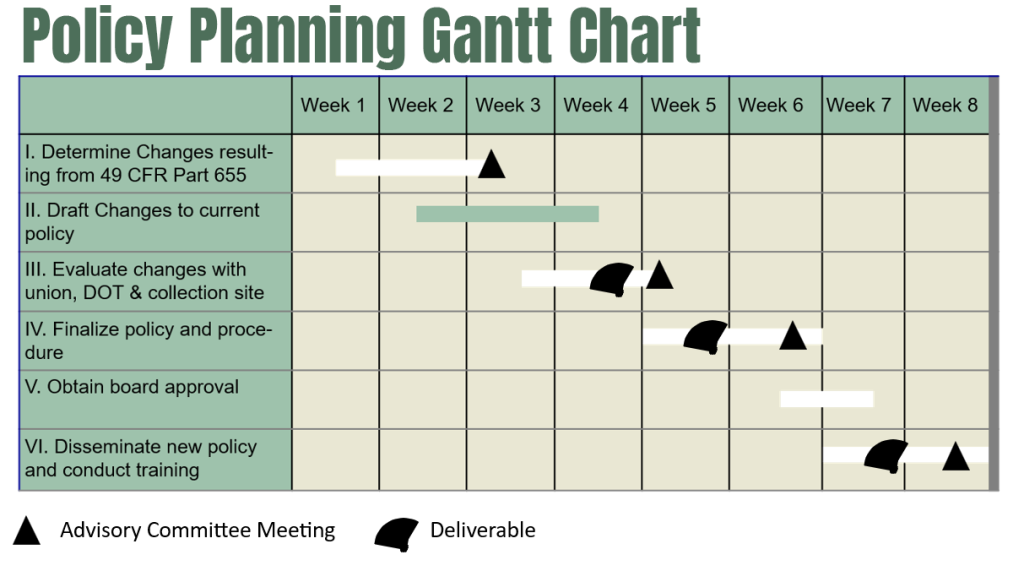Policies and Procedures Best Practices
Policies and Procedures Best Practices
Published on: July 27, 2023
Every transit agency needs to have various policies and procedures put in place. Without effective policies, daily operations would be chaotic, customers would not understand how the system works, and employees would have no guidance. Additionally, policies are a must to satisfy regulatory requirements. There are no “one size fits all” policies, and each organization needs to decide what policies and procedures are best for their particular operation.
What exactly is a policy versus a procedure? A policy is a guideline that explains an organization’s stance on a particular subject and how the organization is to operate. A procedure is the action item, outlining the steps you expect people to take and the consequences of failing to comply.
One thing transit agencies should avoid when developing their policies and procedures is ambiguity. Instead of making general, blanket statements, outline policies in precise detail and write out how procedures should be executed. For example, a policy that simply states “we will provide safe transportation” is a vague generalization and does not help employees understand how to provide safe transportation. Instead, policies should outline the specific steps the agency intends to take to provide the safest transportation service possible.
There are several areas to consider when developing a policy, such as:
- Planning: Plan out the details of your policy, including tasks and deadlines. Development of a Gantt chart could help with planning (see below).

- Analysis: Determine the “what” and “why” of the policy. Why are we developing this policy? What is the purpose? What are the goals?
- Research: Perform due diligence. Discuss the subject matter with experts and other transit agencies to see how they have dealt with the issue. Consider how your own employees and/or riders will be affected by the policy.
- Prewriting: Make sure all needed information is in place before writing the policy and that your wording is organized and easy to read.
- The law: Many policies have to be in place to address applicable regulatory requirements. Agencies need to know the laws and regulations for their policies.
- Finalization and Implementation: Once the policy has been developed, it needs to be reviewed and approved by the agency’s governing authority. Once finalized, a policy needs to be put into action. After all, there is no point in developing a policy if it isn’t going to be carried out!
- Communication: Once the policy is implemented, it needs to be distributed to all employees and passengers, if applicable.
- Updating: Policies need to be revisited every so often to ensure they are still applicable and to determine what, if any, updates need to be made.
While putting together policies and procedures can be a daunting task, there are resources available:
- National RTAP: Developing Effective Policies and Procedures Technical Brief (2023) (includes additional resources)
- FTA Drug and Alcohol Policy Requirements Checklist
- National RTAP ADA Toolkit: Fixed Route Bus Service with ADA Complementary Paratransit Sample Policy
Login to request a different date or venue for this course — or request a new course entirely.